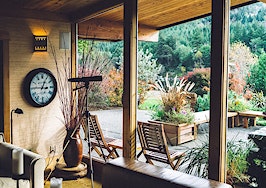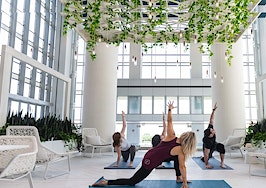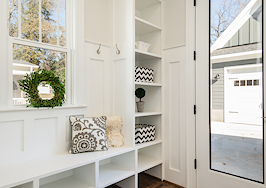As the coronavirus pandemic rages on, homeowners are emphasizing wellness and how their homes contribute to it. Half bathrooms, closets, screened-in back porches and all-white kitchens are all examples of past homeowners’ attempts to safeguard their health amid other pandemics. Although all-white kitchens have stood the test of time, other wellness trends quickly fizzled out as innovators created better, more convenient options.
“When looking at the features of our homes today, it can be difficult to remember that houses didn’t all start out this way—it took centuries of design evolution to get to what we now consider a ‘normal’ layout of a home,” wrote bioethicist Dr. Elizabeth Yuko in an article for Architectural Digest. “It’s possible to trace some design features back to their origins as ways to prevent the spread of infectious diseases.”
“And though it has yet to be seen exactly how the COVID-19 pandemic will influence home design, in 2020 we at least have the benefit of modern science and technology,” Yuko added. “But that hasn’t always been the case.”
Blue-tinted windows

Credit: Getty Images and John C Magee
We’ve all seen blue-tinted glasses, but what about blue-tinted windows? In the late 19th century, blue glass windows were all the rage as a former Civil War general convinced the public it would improve their health.
“Developed in the 1870s by Augustus James Pleasonton, a former Civil War general, the invention was based on the idea that the blue color of the sky was at least partially responsible for helping living organisms thrive,” Yuko explained. “He put his theory to the test by growing grapes in a greenhouse with alternating blue glass [panels] on the roof—later claiming that those under the blue panes grew more than those under clear glass.”
The fad only lasted two years, as medical professionals researched and debunked Pleasonton’s claims.
Octagonal home layout

Credit: Getty Images and Martin Wahlborg
Square and rectangular home layouts have been the standard for millennia, but if American phrenologist Orson Squire Fowler had his way, we’d all be living in octagonal homes. In 1848, Fowler wrote The Octagon: A Home for All, which claimed circular structures were better since they aligned with “nature’s ideal structural form.”
However, late-19th-century homebuilding materials and methods couldn’t achieve a perfect circle, so Fowler settled for the octagon.
“His primary argument in favor of the octagonal house was that it promoted better health through enhanced airflow and more natural light,” Yuko said. “In addition to that, it was more efficient to heat and clean, thanks to its shape.”
Outdoor toilets

Credit: Getty Images and Jeff Spicer
According to Yuko, outdoor toilets were once seen as a luxury feature reserved for well-to-do families. Although these homeowners had the means to afford homes with indoor plumbing and toilets, they believed outdoor options were more sanitary since “bad air” created by flushing spread disease within the home.
“In the late 19th century, people were just getting used to the concept of germ theory, and many thought that germs spread through miasmas—or ‘bad air’ that spread disease,” she explained. “This included ‘sewer gases’ that some public health practitioners believed would bring these bad smells—and the germs that come along with it—up through an indoor toilet that was connected to a city’s sewer system, and [makes] people in the household sick.”
Opinions about outdoor bathrooms changed as medical professionals gained a better understanding of bacterial infections and viruses, and determined indoor toilets were safe and easier to sanitize.
Spittoons

Credit: Getty Images and Sergei Pivovarov
The last trend to get the boot was communal spittoons. According to Yuko, communal spittoons were common in homes and public spaces so people could have places to spit, cough up phlegm or dispose of chewing tobacco. Communal spittoons stuck around through the early 20th century until the tuberculosis pandemic pushed the public to say goodbye to the trend.
“[…] Doctors realized that spittoons could actually contribute to the spread of TB—especially if someone misses and their saliva ends up on the outside of the receptacle, or on the floor,” Yuko explained. “But the spittoon didn’t disappear completely: Some people with tuberculosis carried pocket-size personal ‘hygienic’ spittoons with them for the occasions when they needed to expectorate in public.”











